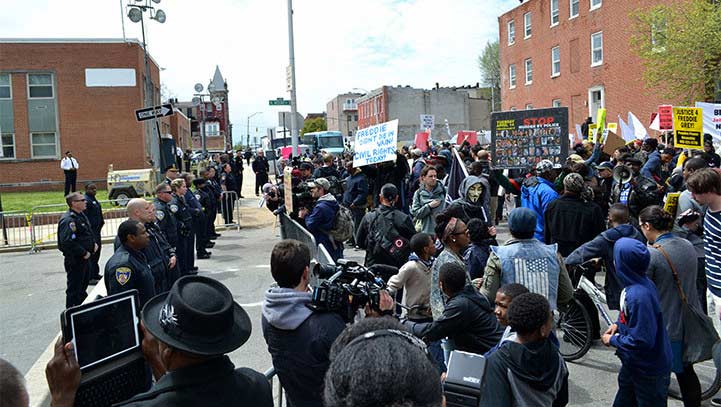
May 15, 2015
The death of Freddie Gray, 25, while in police custody touched off the Baltimore riots that held the nation’s attention for over a week. In the wake of rioting and mass protests, the city imposed a six-day curfew, during which time 486 people were arrested.
Now that the fires are out and the curfew has been lifted, many have written off the event as a spasm of urban unrest and are moving on. But to the residents of Baltimore, the effects linger front and center in everyone’s minds. While workers and good Samaritans clear debris, unshutter storefronts and reopen Mondawmin Mall, one fact remains painfully clear: it’s not over. Not by a long shot.
Here is what residents will endure for the foreseeable future.
The neighborhood
Freddie Gray called West Baltimore home, as do the residents of neighborhoods like Sandtown-Winchester/Harlem Park, 97% of whom are black. According to progressive think tank the Justice Policy Institute, the violent crime rate is 23 per 1,000 residents, which is six times the national average.
More sobering is the 52% unemployment rate and the fact that only 25% of adults over 25 have a high-school diploma. To those of us on the outside, these are merely statistics. But those in Baltimore have to live it every day, and they will continue to do so long after the riots are supplanted in the minds of Middle Americans by the next trend in the 24-hour news cycle.
The police
Before creating the critically acclaimed HBO series “The Wire,” David Simon was a crime reporter in Baltimore for over a decade. In an interview with The Marshall Project , he describes a law-enforcement culture that for years disregarded probable cause, meting out “rough rides” and administering beatings almost indiscriminately.
This is at least partially evident in the nearly $5.7 million the city has paid out in settlements since 2011 to victims of abuse at the hands of police. And while only the officers and Freddie Gray know what happened in the back of that police van, the fact that the latter isn’t alive to tell his side of the story supports the theory that, where it concerns the Baltimore Police Department, the more things change, the more they stay the same.
The accused
State’s Attorney Marilyn J. Mosby filed charges against Gray’s six arresting officers less than two weeks after the incident. Community members praised the move while the police union denounced it as a rush to judgment. The side of law enforcement may very well be right—but not for the reasons they think.
Many legal experts acknowledge just how difficult it is to win a conviction against a police officer. Legally, they are not held to the same standards as, say, a plumber or carpenter or businessperson. It’s for these reasons charges are rarely filed against police officers after fatal encounters with suspects, and even rarer that a jury will convict them. So, rather than a moral victory, the charging of these officers could very well end up being a preamble to more pain, heartbreak and anger.






